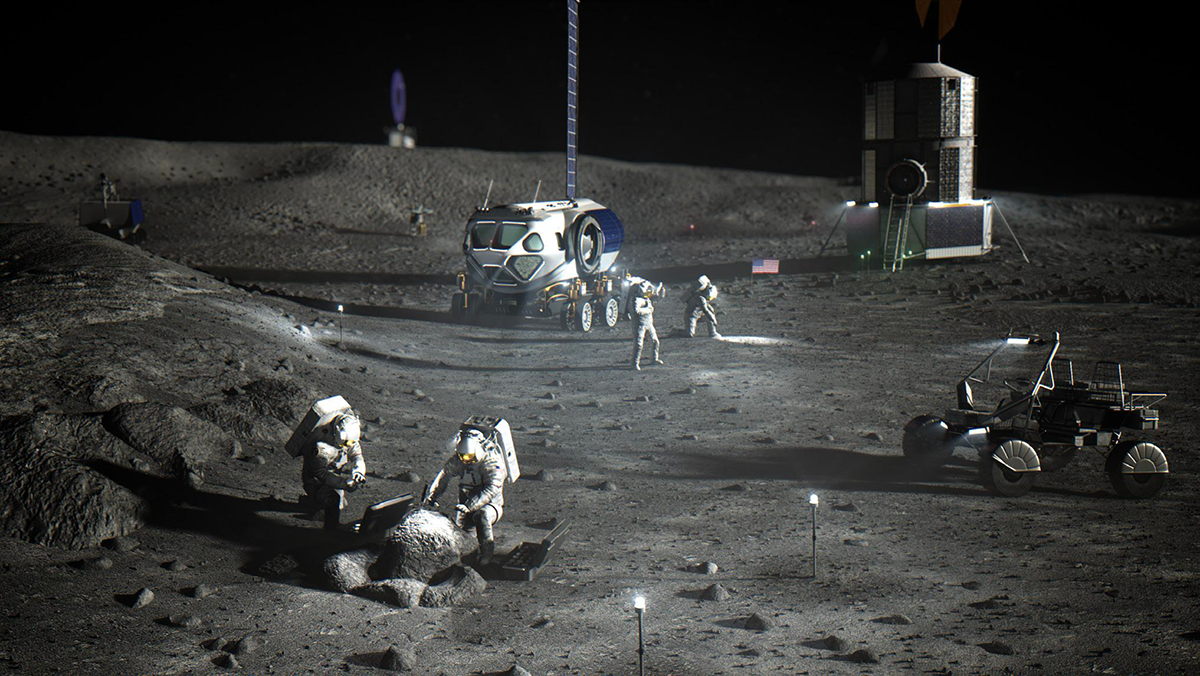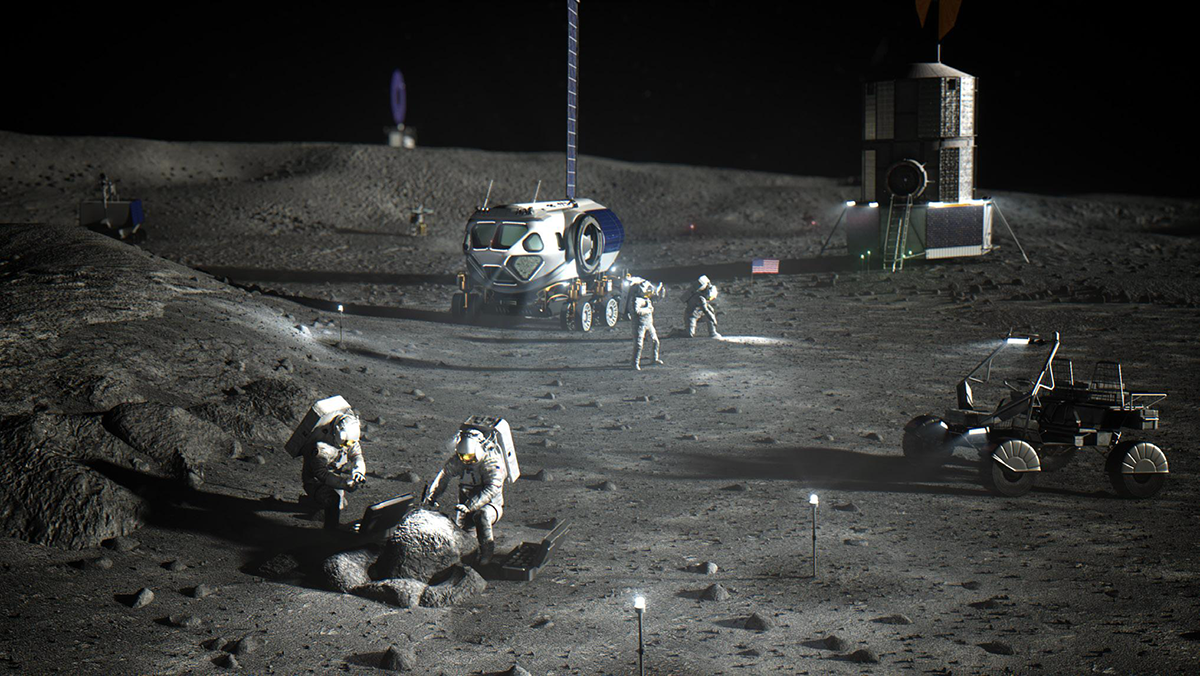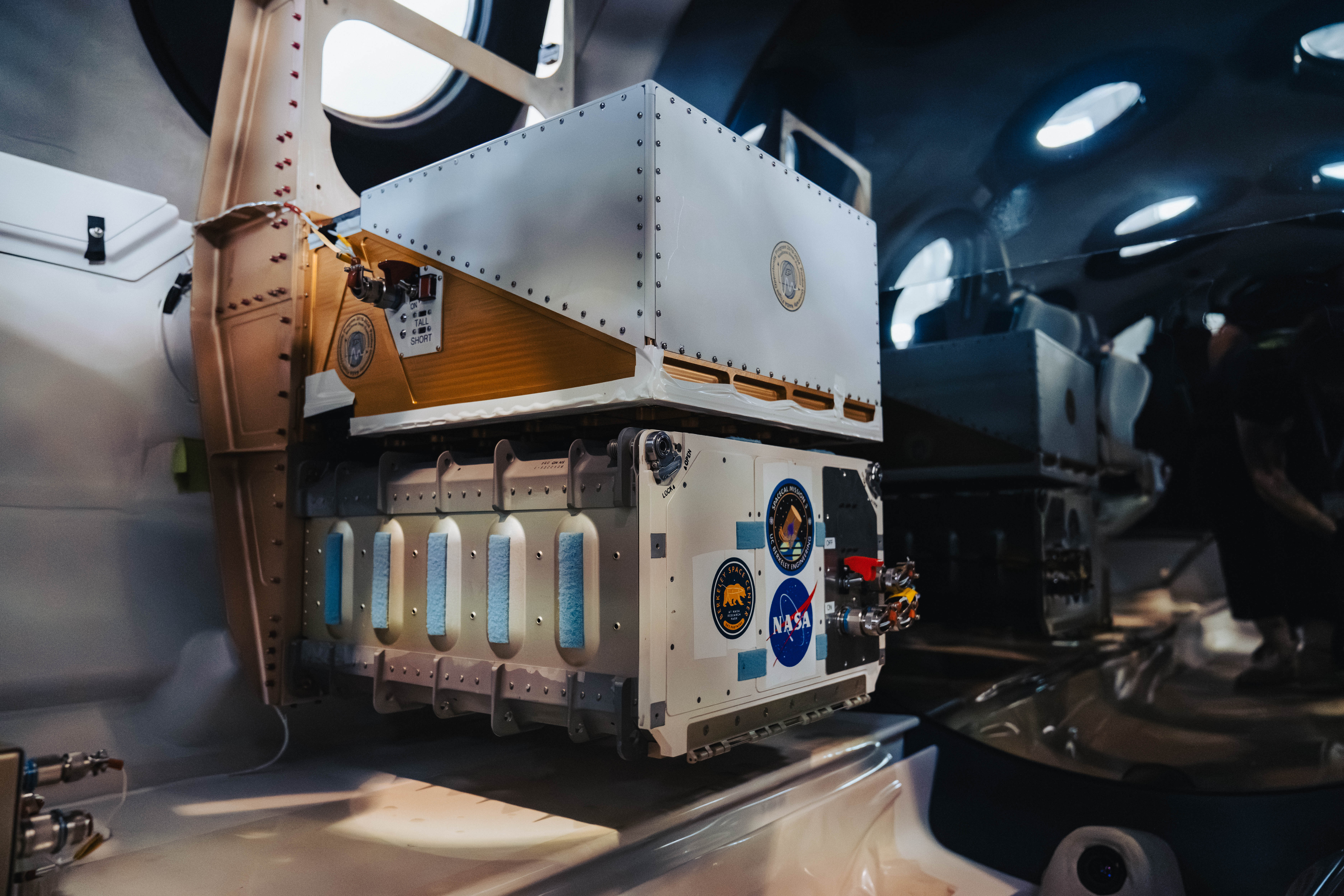OTPS seeks input from the lunar community to inform a framework for further work on non-interference of lunar activities
Questionnaire responses due by June 7, 2024 NASA’s Office of Technology, Policy, and Strategy (OTPS) is asking members of the lunar community to respond to a new Lunar Non-Interference Questionnaire that will inform the development of a framework for further work on non-interference of lunar activities. There is no funding or solicitation expected to follow. […]

6 min read
Preparations for Next Moonwalk Simulations Underway (and Underwater)
Questionnaire responses due by June 7, 2024
NASA’s Office of Technology, Policy, and Strategy (OTPS) is asking members of the lunar community to respond to a new Lunar Non-Interference Questionnaire that will inform the development of a framework for further work on non-interference of lunar activities. There is no funding or solicitation expected to follow.
OTPS was created in November 2021 within the Office of the NASA Administrator to work transparently in collaboration across NASA and with the broader space community to provide NASA leadership with a trade space of data- and evidence-driven options to develop and shape NASA policy, strategy, and technology.
The purpose of the questionnaire
As dozens of countries and private sector companies have expressed interest in establishing lunar operations by the end of the decade, including many in the South Pole region, it will be critical to determine how to minimize interference and contamination in lunar activities. Deconfliction has been identified as an area of further work in Section 11 of the Artemis Accords and will be an area of increasing importance as the number of commercial and international actors operating on the lunar surface grows.
In 2016, the Lunar Exploration Analysis Group developed “The Lunar Exploration Roadmap: Exploring the Moon in the 21st Century: Themes, Goals, Objectives, Investigations, and Priorities, 2016”, which aimed to develop an “integrated and sustainable plan for lunar exploration.” The roadmap explored the prioritization of lunar science activities, and designated which science objectives could be adversely impacted by further lunar exploration.
Although lunar interference and contamination concerns have been broadly identified and expanded beyond the initial findings of the 2016 report (e.g., plume surface interactions and dust, hazardous waste, propellant deposition from overflight, electromagnetic interference), there is not broad consensus in the lunar scientific or technical community on key questions such as how to understand the potential value of lunar sites, how to mitigate the impacts of interference or contamination at such sites, and how to determine the change in value of a lunar site should certain interference or contamination activities occur.
The data collected in this questionnaire will support NASA strategic decision-making on the protection needed for lunar activities. This questionnaire seeks feedback from the lunar community to determine the breadth of interference and contamination concerns and clarify community usage of the terms “interference,” “contamination,” and “deconfliction.” This questionnaire aims to contribute to the development of a framework for further deconfliction activity.
The questionnaire and how to submit responses
Please copy and paste the questions below into a searchable, unlocked Portable Document File (PDF) or Word (DocX) file with edit permissions enabled. Include electronic links to, or copies of, any comments containing references, studies, research, and other empirical data that are not widely published. Send the file via email to HQ-OTPS-Applications@nasa.gov with the subject line “Lunar Non-Interference” by Friday, June 7, 2024.
Questions
- How do you define these terms?
- Interference
- Contamination
- Deconfliction
- Understanding the Potential Value of a Site
- What attributes/characteristics are relevant to site selection in consideration of science objectives? Attributes may include time-sensitive orphysical characteristics, holds awaiting technology or science advancements, or other perspectives. Example scenarios are encouraged.
- Impacting the Potential Value of a Site
- What human or robotic actions/events may negatively impact the value of a lunar site? Such as chemical contamination, physical contact, hardware proximity (for example Apollo hardware causing localized ‘moon quakes’ due to heating and cooling differences vs surroundings), waste hazards, etc.
- How do the impacts of those actions/events alter the value of a site (e.g., unusable for certain missions, usable for certain missions but not others)?
- What detrimental impacts are permanent, temporary, or still unknown?
- What data, models, or information is needed to inform the value? Such as how to understand where contaminants are going, what they are doing that impacts science, computational models validated with ground and flight data, etc.
- What human or robotic actions/events may negatively impact the value of a lunar site? Such as chemical contamination, physical contact, hardware proximity (for example Apollo hardware causing localized ‘moon quakes’ due to heating and cooling differences vs surroundings), waste hazards, etc.
- Mitigation Mechanisms
- What types of mitigation mechanisms exist to preserve the value of a site?
- During what phases of operations are mitigation mechanisms needed? Examples include ascent/descent, overflight, traverse, contingency, experimental or construction phase, etc.
- What technologies/capabilities need to be developed?
- What types of communication and coordination efforts minimize concerns? Such as development/planned activity timelines for pre-coordination, operational timelines with time-critical communication mechanisms, list of materials, transparency, etc
Additional information and disclaimers
OTPS intends to use the responses to these questions to inform the development of a framework for future work. The use or inclusion of information in the development of any future OTPS work does not constitute endorsement of any entity, or any products, services, technologies, activities, or agency policy. The information contained in any future OTPS work will reflect solely the views and opinions of the authors.
Respondents are encouraged to provide information that is not constrained by limited or restricted data rights. No Personally Identifiable Information (PII) should be submitted with the response. Responses received will not be released in their submitted form outside of NASA. Anonymized information derived from the responses received (i.e., general information not attributable to any particular respondent) also may be shared within the government, but only as reasonably necessary and appropriate. Further, any anonymized, non-attributable information may also eventually be used to develop and refine the framework for future work on lunar non-interference, and therefore may be recognizable to one or more respondents. If respondents feel that proprietary or confidential/business-sensitive information is necessary for NASA’s informational purposes to be responsive to the questions presented below, and such information is provided and appropriately marked as such, NASA will not publicly disclose or disseminate it and will protect it in strict accordance with all applicable laws and agency policies. NASA will not disclose any specific feedback provided from one firm/respondent with any other interested entities.
Please note that NASA employees and its support contractors’ employees and/or their subcontractors working on behalf of NASA may review the responses. NASA contractors and subcontractors are governed by non-disclosure provisions in their applicable contracts and subcontracts, which protects the confidentiality of all information reviewed.
Respondents are solely responsible for all expenses associated with responses. Responses will not be returned, nor will respondents be contacted about their responses.
OTPS appreciates your participation and looks forward to your responses.
“The Lunar Exploration Roadmap: Exploring the Moon in the 21st Century: Themes, Goals, Objectives, Investigations, and Priorities, 2016,” Lunar Exploration Analysis Group, 2016 https://www.lpi.usra.edu/leag/LER-2016.pdf1
Share
Details
Related Terms
What's Your Reaction?



















.jpg?#)

































